
andrei, he/him, 21, made this at 14 when i was a space nerd but i never fully grew out of that phase so,,,,..,hubble telescope + alien life + exoplanet + sci fi nerd
245 posts
Latest Posts by starlost - Page 6


new photos of jupiter from the juno spacecraft | (good to know that van gogh had a say in how jupiter was designed)
space shit is cancelled until we solve homelessness and poverty


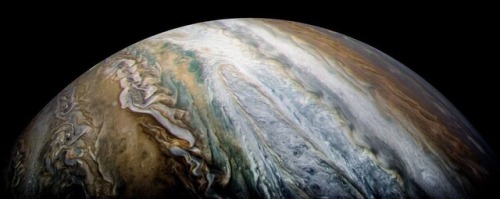
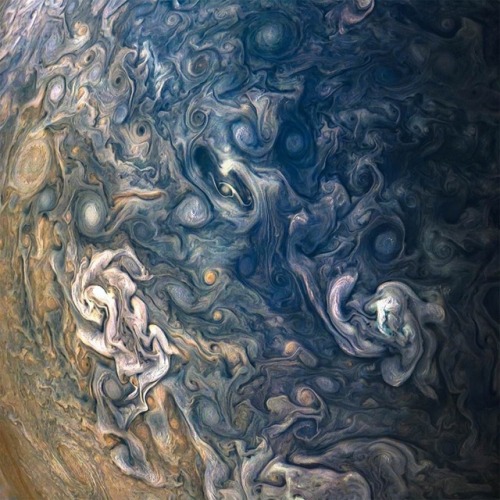
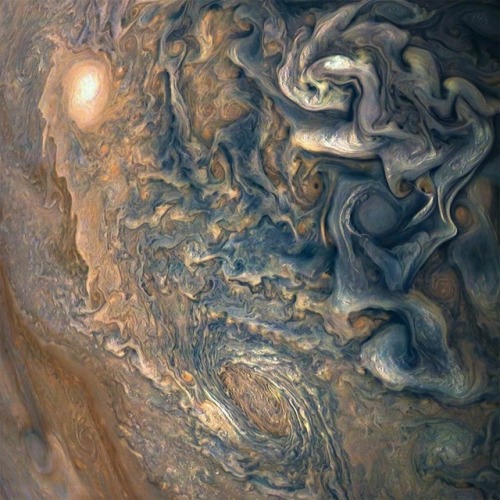
Ten interesting facts about Pluto
Here is a list of some interesting facts about Pluto. A dwarf planet with a very different geology than previously thought, and despite being a small celestial body - Pluto has its own moons.

Pluto was known as the smallest planet in the solar system and the ninth planet from the sun until it was reclassified by the International Astronomical Union in 2006.

Today, Pluto is called a dwarf planet. A dwarf planet orbits the sun just like other planets, but it is smaller. It is large enough for its gravity to pull it into the shape of a ball but it is too small to clear other objects and debris out of its path around the sun.

Pluto was discovered on February 18th, 1930 by the Lowell Observatory. For the 76 years between Pluto being discovered and the time it was reclassified as a dwarf planet it completed under a third of its orbit around the Sun.

On average, Pluto is more than 3.6 billion miles (5.8 billion kilometers) away from the sun. That is about 40 times as far from the sun as Earth is. Pluto orbits the sun in an oval like a racetrack. Because of its oval orbit, Pluto is sometimes closer to the sun than at other times. At its closest point to the sun Pluto is still billions of miles away but is actually closer than Neptune.

This dwarf planet has five moons. Its largest moon is named Charon (KAIR-uhn). Charon is about half the size of Pluto.

Pluto has four other, much smaller, moons. They are named Nix, Hydra, Kerberos, and Styx. They were discovered in 2005, 2005, 2011, and 2012, respectively. NASA’s Hubble Space Telescope took pictures of the new moons. All four are small.

Observations of Pluto’s surface by the New Horizons spacecraft revealed a variety of surface features, including mountains that reach as high as 11,000 feet (3,500 meters), comparable to the Rocky Mountains on Earth. While methane and nitrogen ice cover much of the surface of Pluto, these materials are not strong enough to support such enormous peaks, so scientists suspect that the mountains are formed on a bedrock of water ice.

Pluto’s surface is one of the coldest places in the solar system, at roughly minus 375 degrees Fahrenheit (minus 225 degrees Celsius). When compared with past images, pictures of Pluto taken by the Hubble Space Telescope revealed that the dwarf planet had apparently grown redder over time, apparently due to seasonal changes.

When Pluto is closer to the sun, its surface ices thaw and temporarily form a thin atmosphere, consisting mostly of nitrogen, with some methane.

Pluto’s low gravity, which is a little more than one-twentieth that of Earth’s, causes this atmosphere to extend much higher in altitude than Earth’s.
sources: solarsystem.nasa and space.com
image credit: NASA/JPL - Lowell Observatory Archives
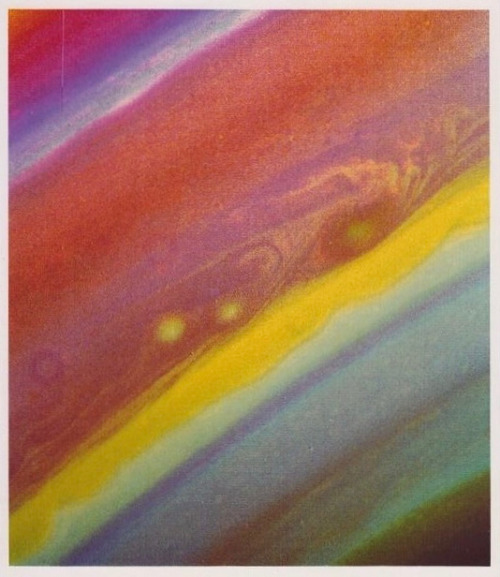
Vintage NASA press pic of Saturn’s northern hemisphere, observed by the Voyager 2 probe from 4.4 million miles away, August 19, 1981.




My friend Miriam wrote this article and it’s changed me a little (In a good way).

Frontispiece. Saturn & a total eclipse. The solar system. 1852.

“The south pole of Mars, September 1877.” Star-land : being talks with young people about the wonders of the heavens. 1892.
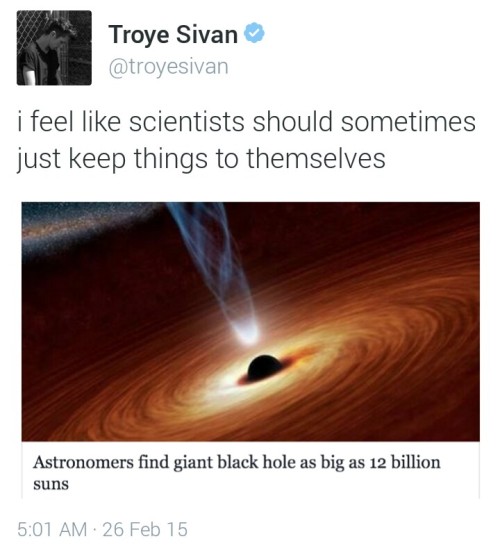


Saturn and its rings captured by Hubble in Ultraviolet light.
js

Star Formation in the Tadpole Nebula https://go.nasa.gov/2uELbHf


She should have a statue. Not those confederate MFs.

M2 9: Wings of a Butterfly Nebula : Are stars better appreciated for their art after they die? Actually, stars usually create their most artistic displays as they die. In the case of low-mass stars like our Sun and M2-9 pictured above, the stars transform themselves from normal stars to white dwarfs by casting off their outer gaseous envelopes. The expended gas frequently forms an impressive display called a planetary nebula that fades gradually over thousands of years. M2-9, a butterfly planetary nebula 2100 light-years away shown in representative colors, has wings that tell a strange but incomplete tale. In the center, two stars orbit inside a gaseous disk 10 times the orbit of Pluto. The expelled envelope of the dying star breaks out from the disk creating the bipolar appearance. Much remains unknown about the physical processes that cause planetary nebulae. via NASA
js
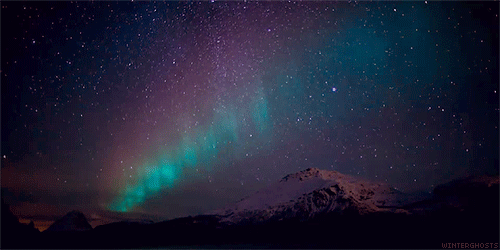

Taken Under the ‘Wing’ of the Small Magellanic Cloud https://go.nasa.gov/2uC4d0c
space is weird
vague post
theres this orb in the sky ive been seeing. i see it every day i dont like it. not naming names
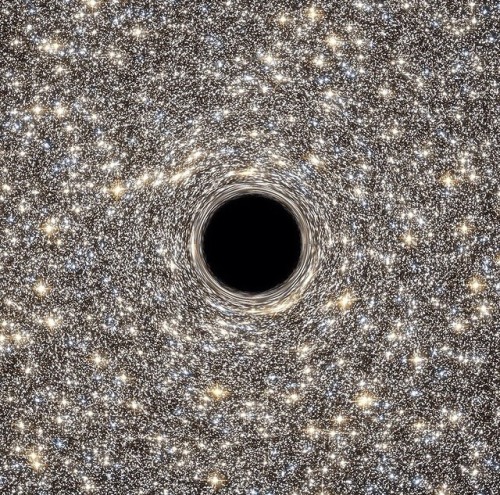
M60-UCD1 black hole, via NASA
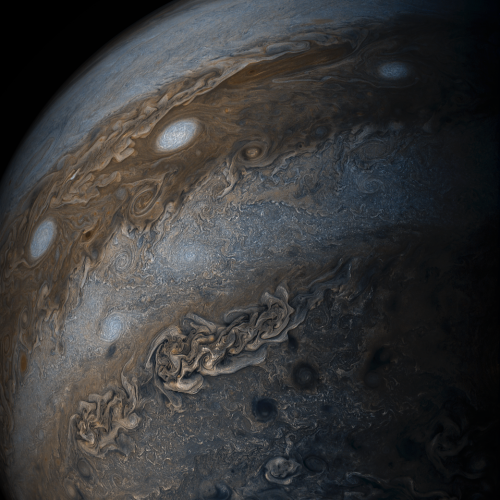
Jupiter’s Bands of Clouds
This enhanced-color image of Jupiter’s bands of light and dark clouds was created by citizen scientists Gerald Eichstädt and Seán Doran using data from the JunoCam imager on NASA’s Juno spacecraft.
Three of the white oval storms known as the “String of Pearls” are visible near the top of the image. Each of the alternating light and dark atmospheric bands in this image is wider than Earth, and each rages around Jupiter at hundreds of miles (kilometers) per hour. The lighter areas are regions where gas is rising, and the darker bands are regions where gas is sinking.
Credits: NASA/JPL-Caltech/SwRI/MSSS/Gerald Eichstädt /Seán Doran

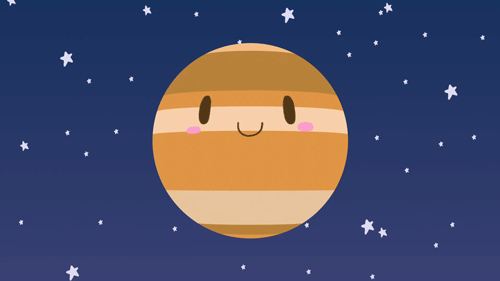
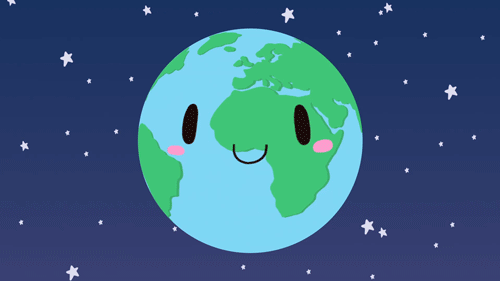


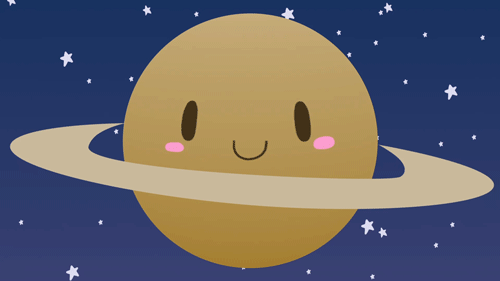

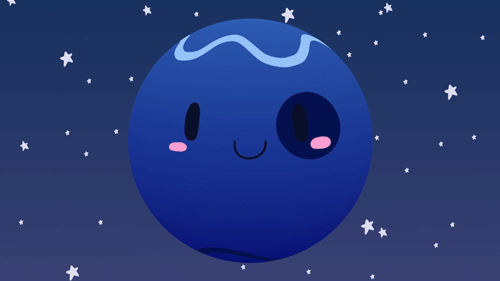
The Solar System!

bonus Pluto!
if u feel like u dont know what ur doing w ur life just remember that venus spins backwards and we dont even fuckin know why. just do whatever you wanna honestly
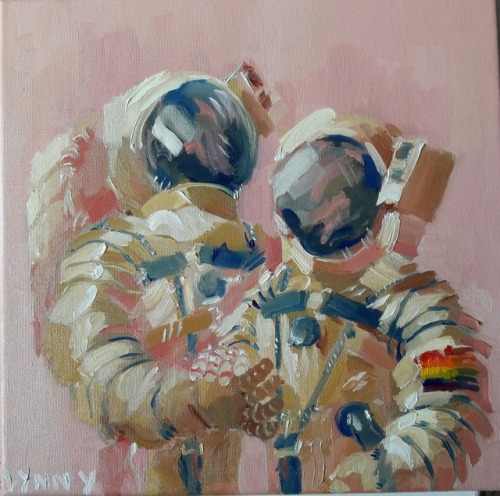
gay astronauts on a romantic honeymoon space adventure (oil on canvas 10" x 10")
sometimes before i go to sleep, i like to get my cellphone, put my headphones on, play city lights by blanche and close my eyes and pretend that i am just floating on a rock in the outer space, all alone in the danger zone

Waltzing dwarfs
This seemingly unspectacular series of dots with varying distances between them actually shows the slow waltz of two brown dwarfs. The image is a stack of 12 images made over the course of three years with the Hubble Space Telescope. Using high-precision astrometry, an Italian-led team of astronomers tracked the two components of the system as they moved both across the sky and around each other. The observed system, Luhman 16AB, is only about six light-years away and is the third closest stellar system to Earth — after the triple star system Alpha Centauri and Barnard’s Star. Despite its proximity, Luhman 16AB was only discovered in 2013 by the astronomer Kevin Luhman. The two brown dwarfs that make up the system, Luhman 16A and Luhman 16B, orbit each other at a distance of only three times the distance between the Earth and the Sun, and so these observations are a showcase for Hubble’s precision and high resolution.
Credit: ESA/Hubble & NASA, L. Bedin et al.



Fictional space mission/alternative history
Another artwork in Cosmonaut series. This time it’s cosmonaut on Ganymede, largest moon of Jupiter.
Prints of this and other artworks are available in my deviantART.com and society6.com shops.
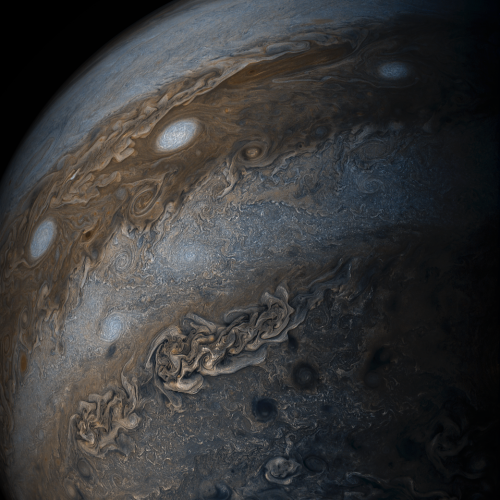
Swirling bands of light and dark clouds on Jupiter are seen in this image made by citizen scientists using data from our Juno spacecraft. Each of the alternating light and dark atmospheric bands in this image is wider than Earth, and each rages around Jupiter at hundreds of miles (km) per hour. The lighter areas are regions where gas is rising, and the darker bands are regions where gas is sinking. This image was acquired on May 19, 2017 from about 20,800 miles (33,400km) above Jupiter’s cloud tops. Learn more
Credits: NASA/JPL-Caltech/SwRI/MSSS/Gerald Eichstädt /Seán Doran
Make sure to follow us on Tumblr for your regular dose of space: http://nasa.tumblr.com